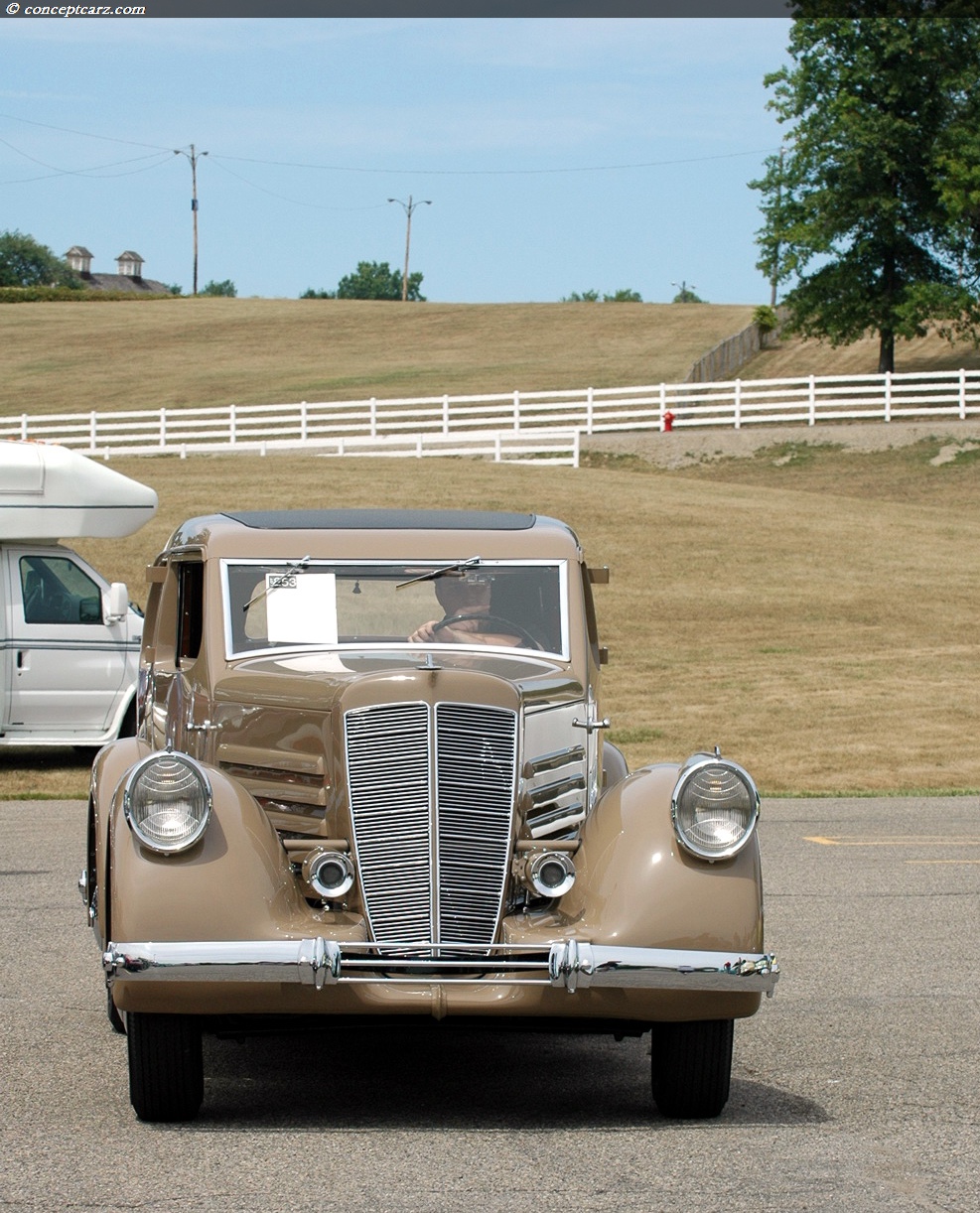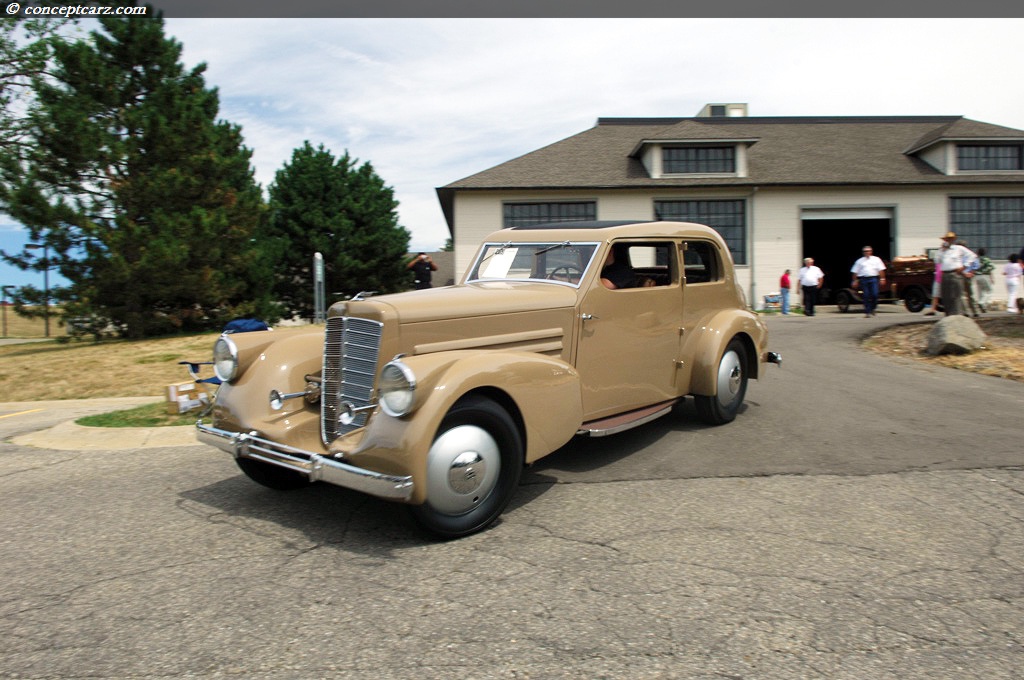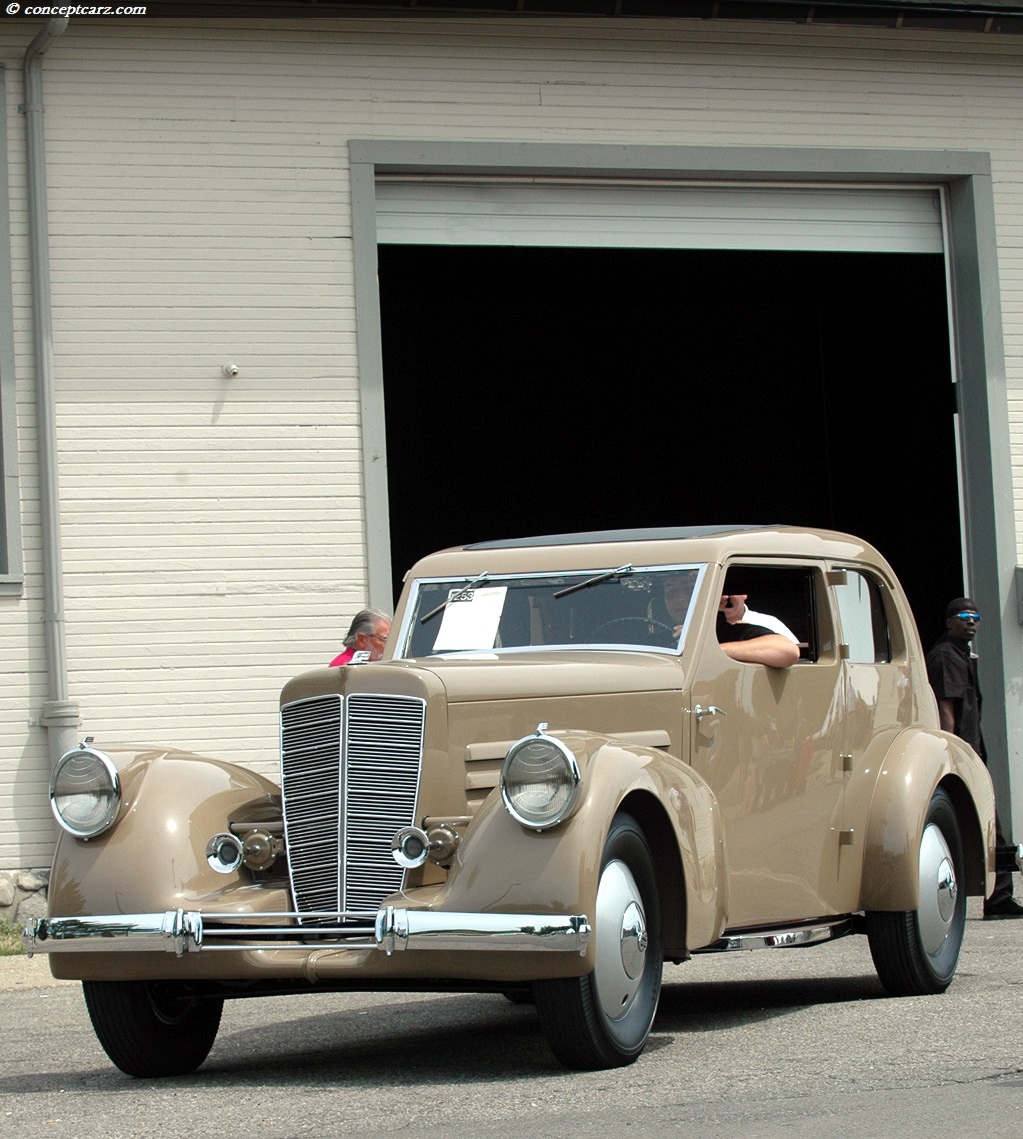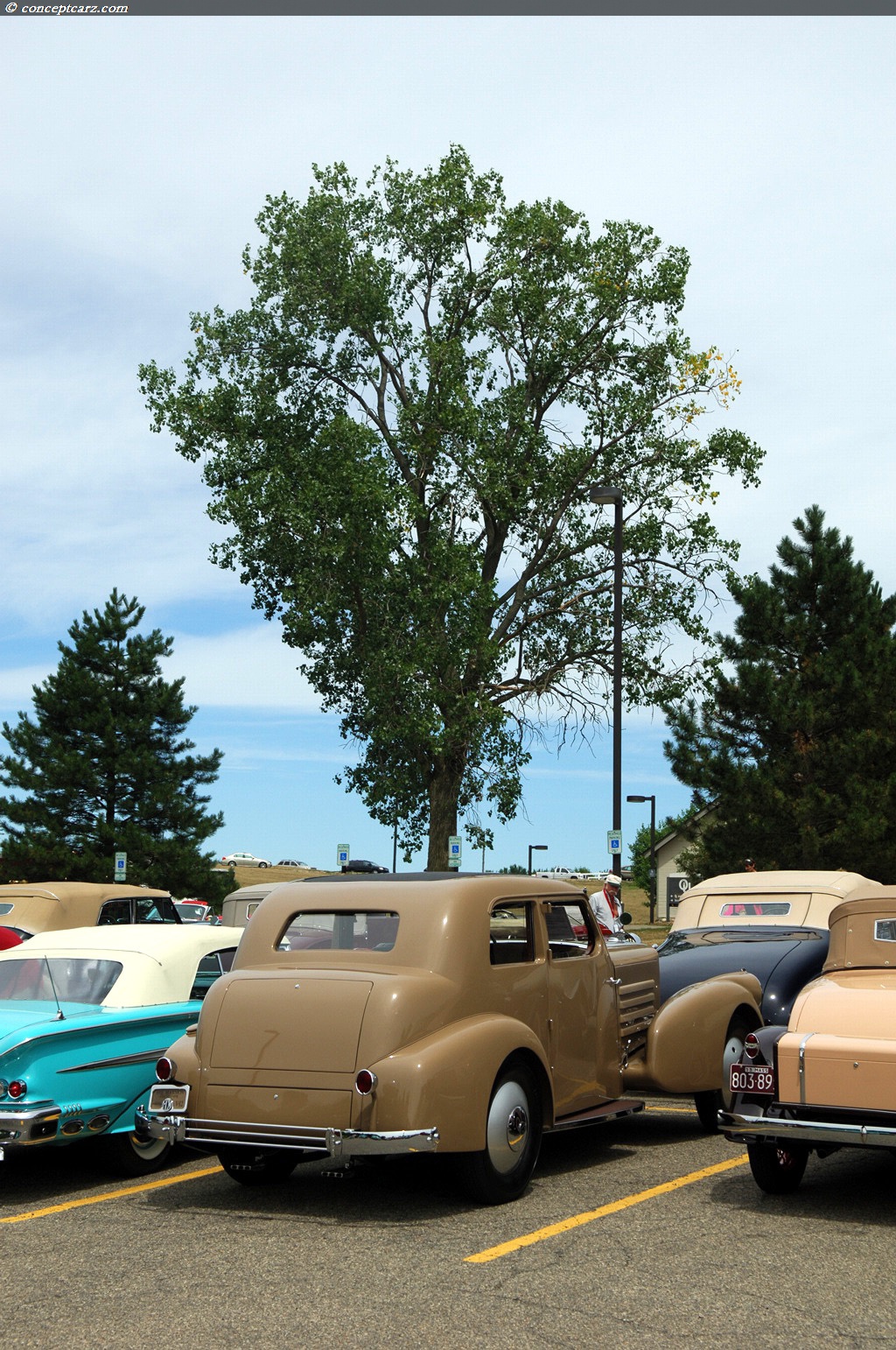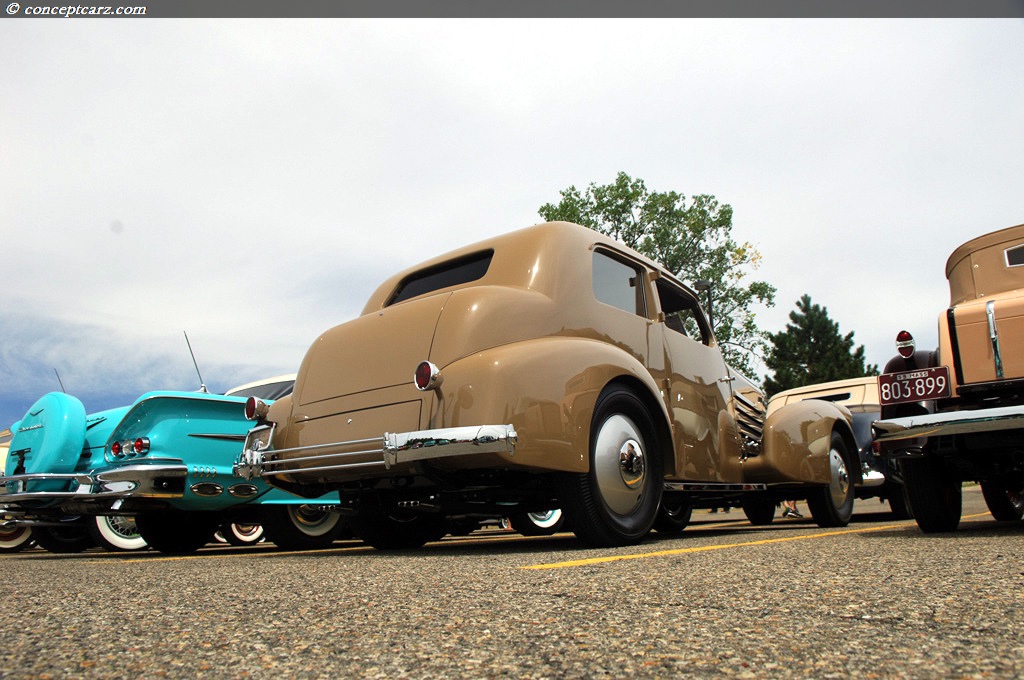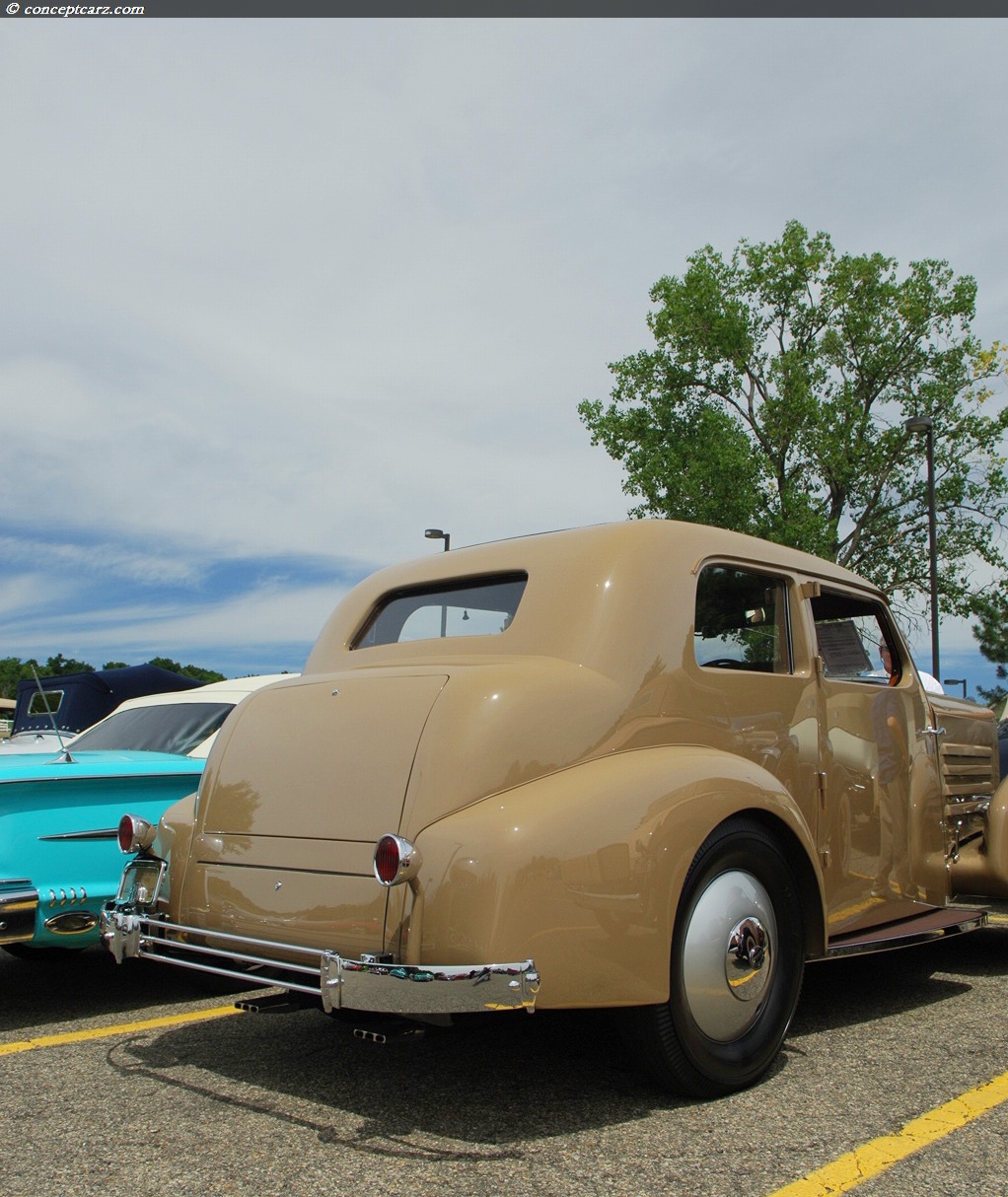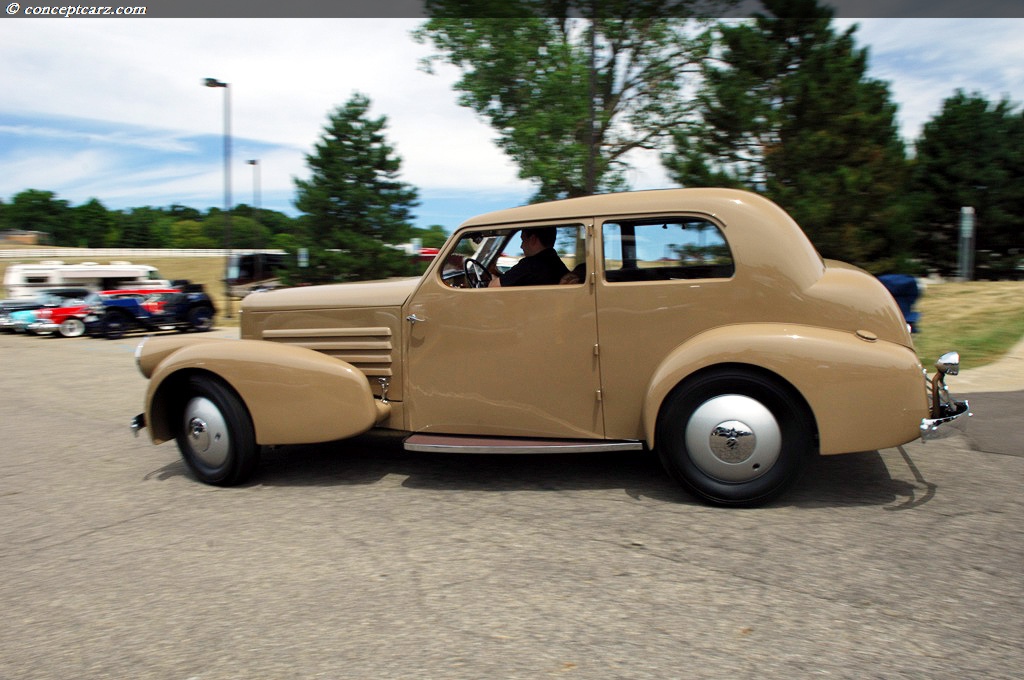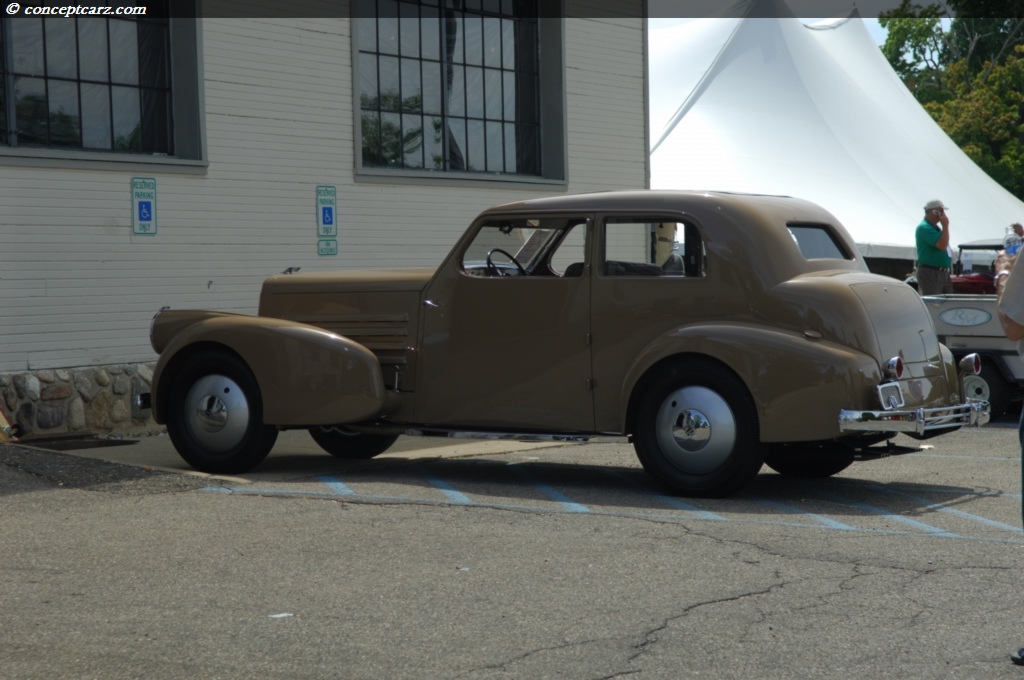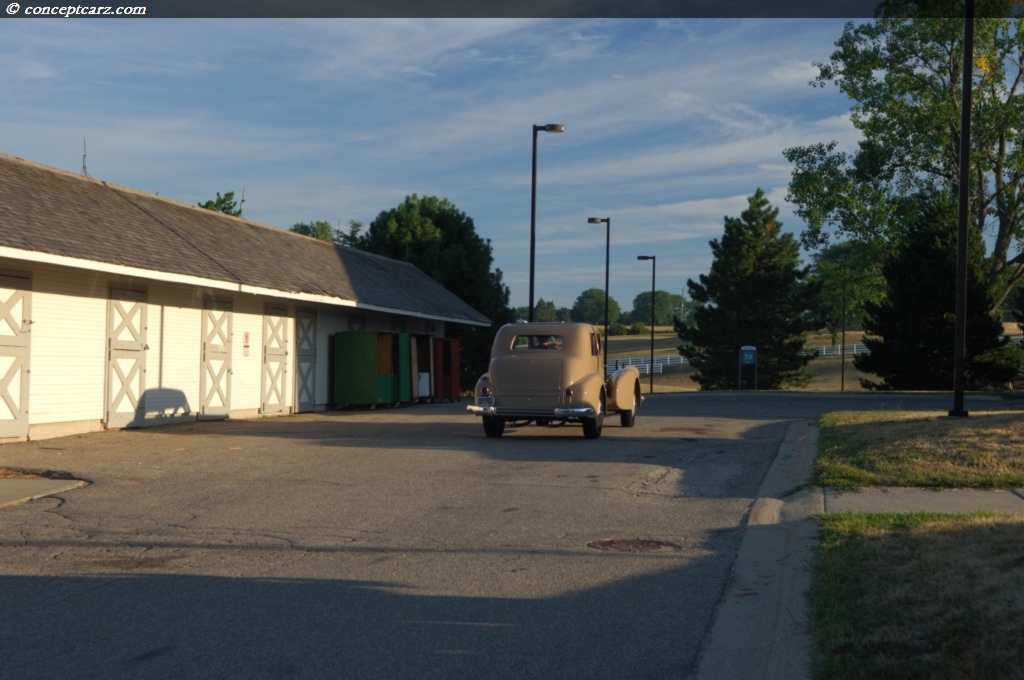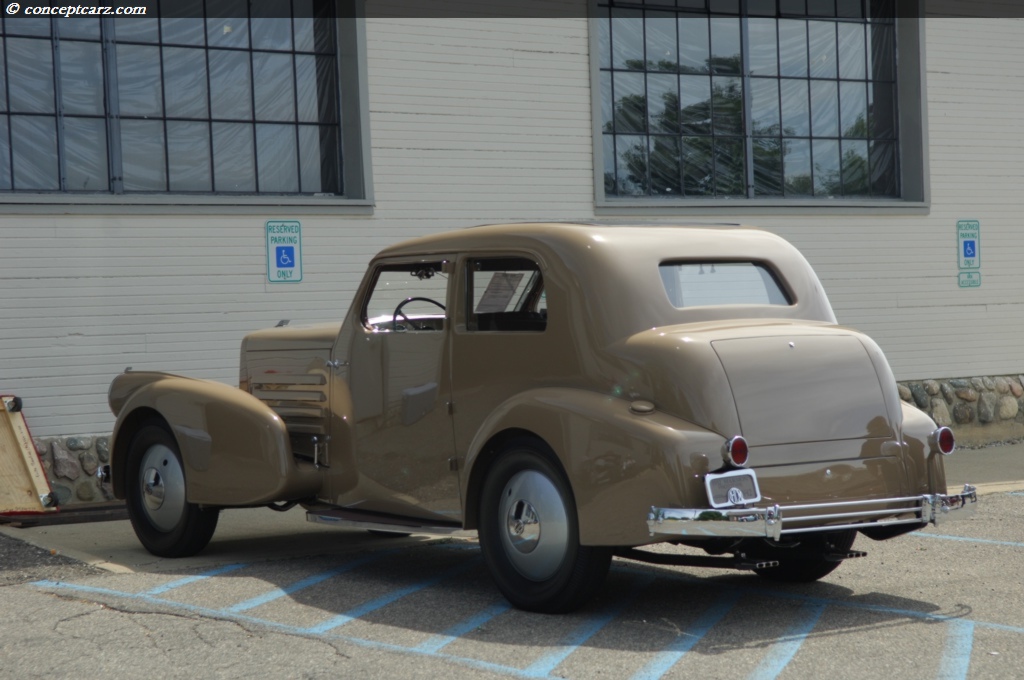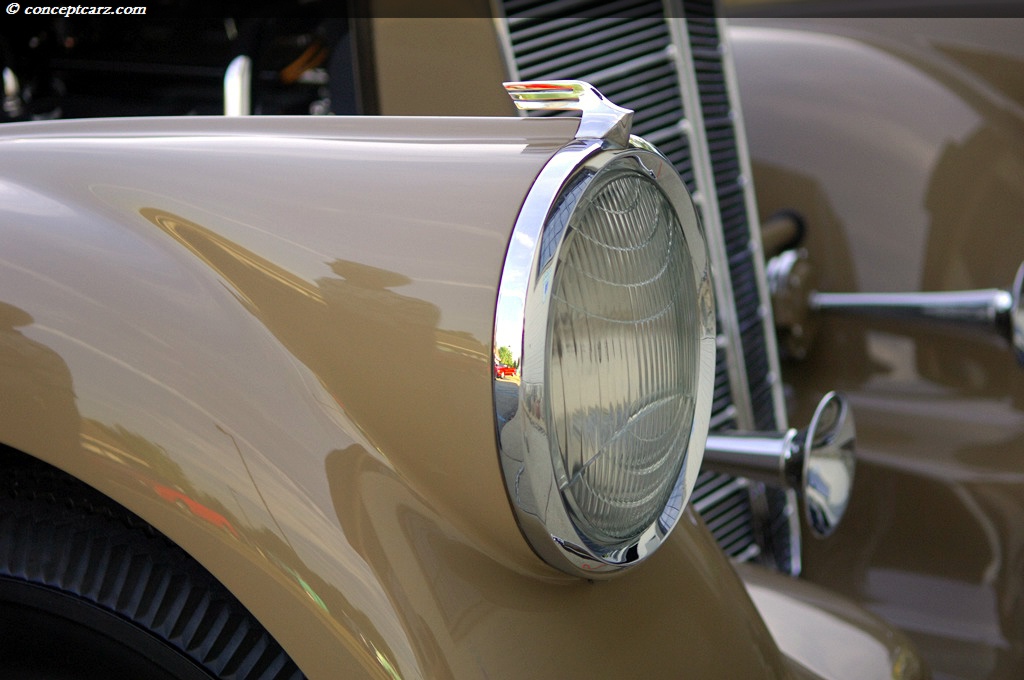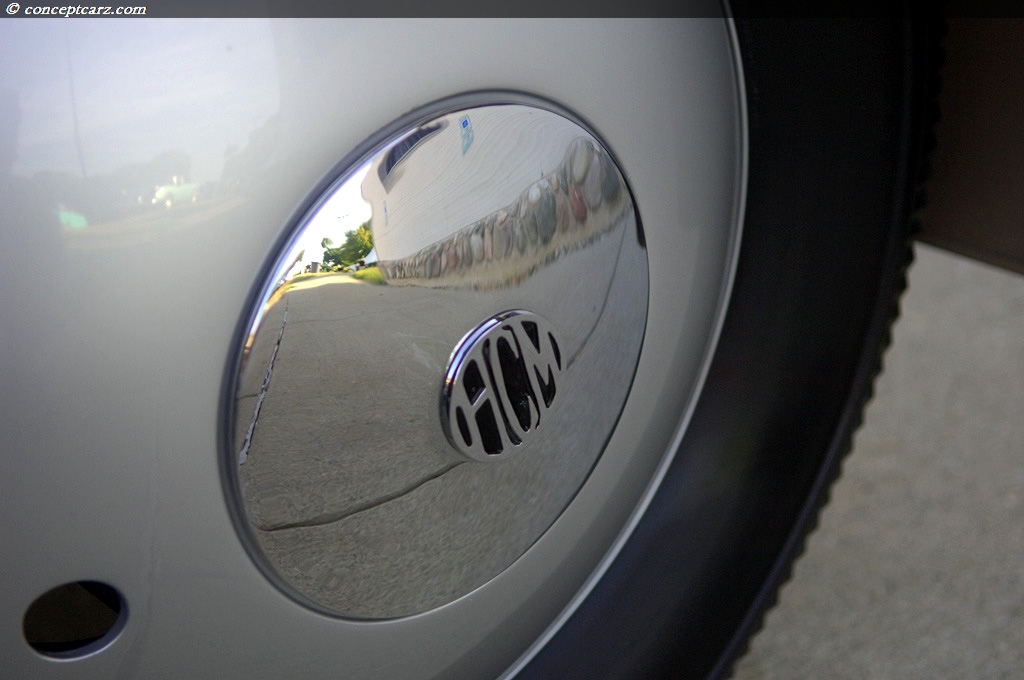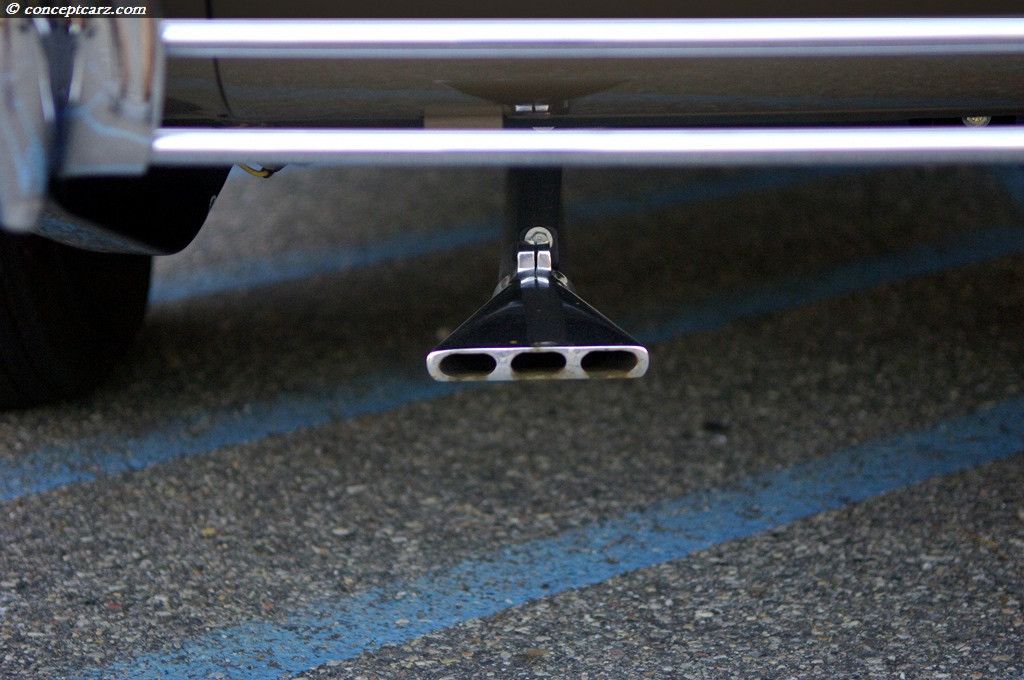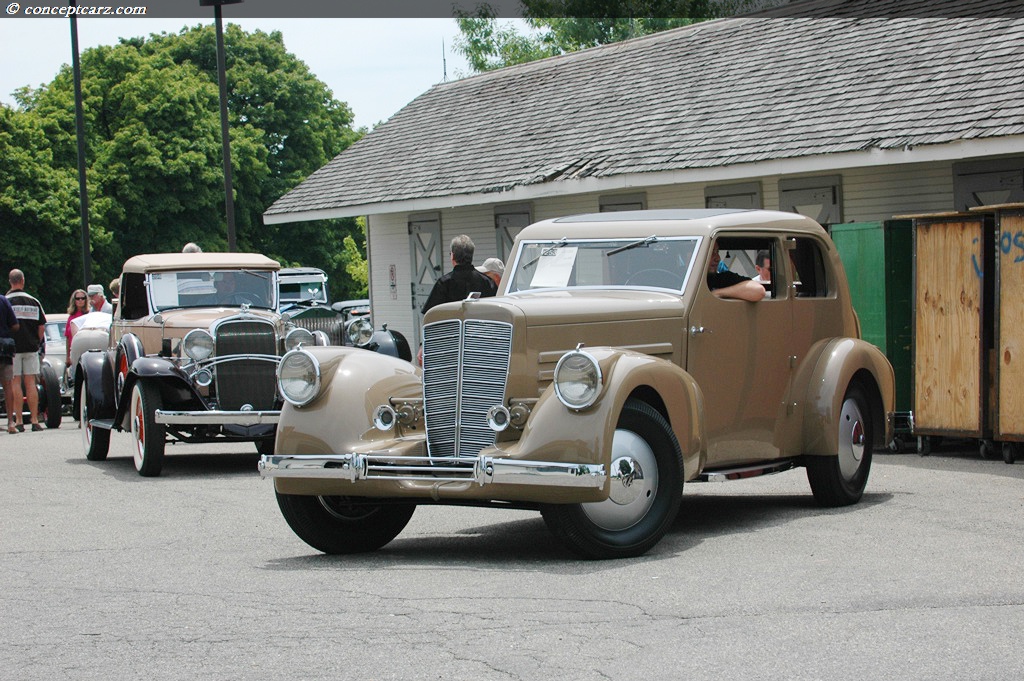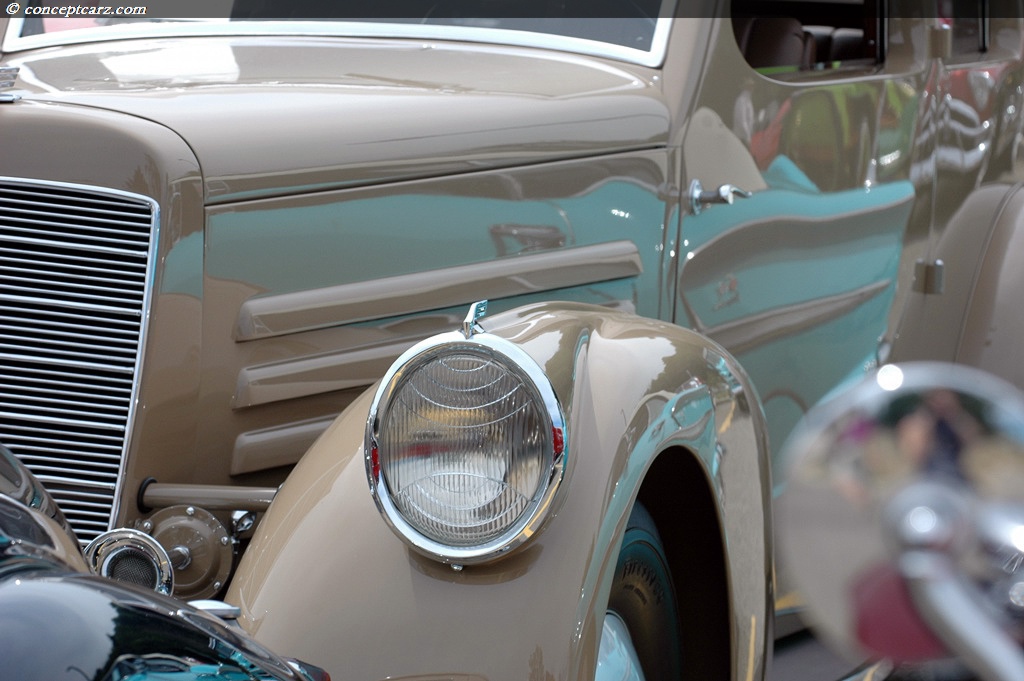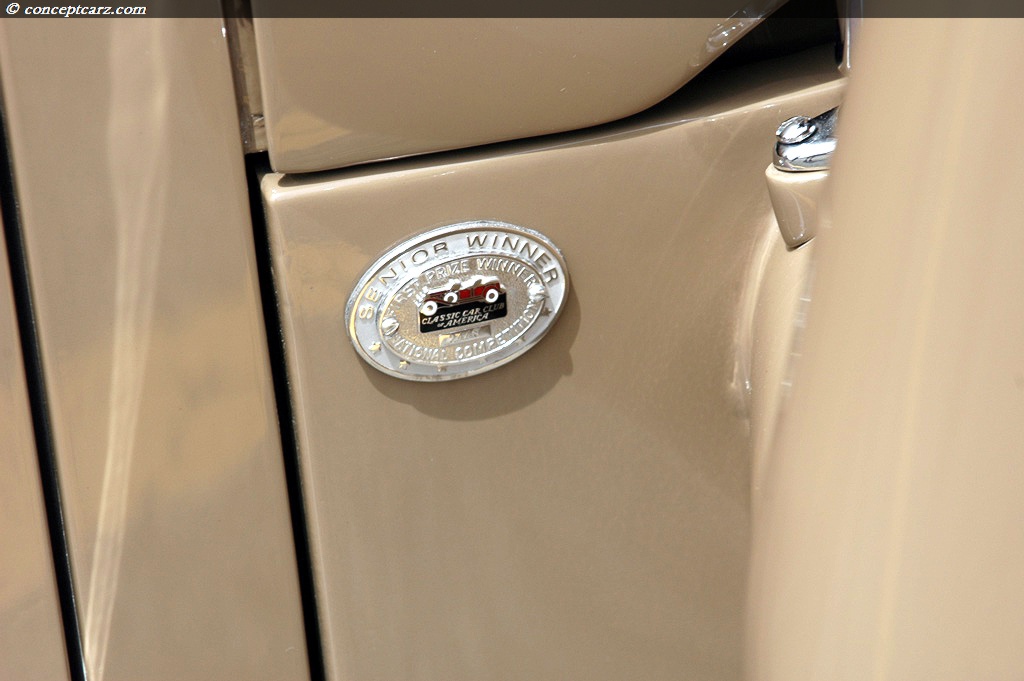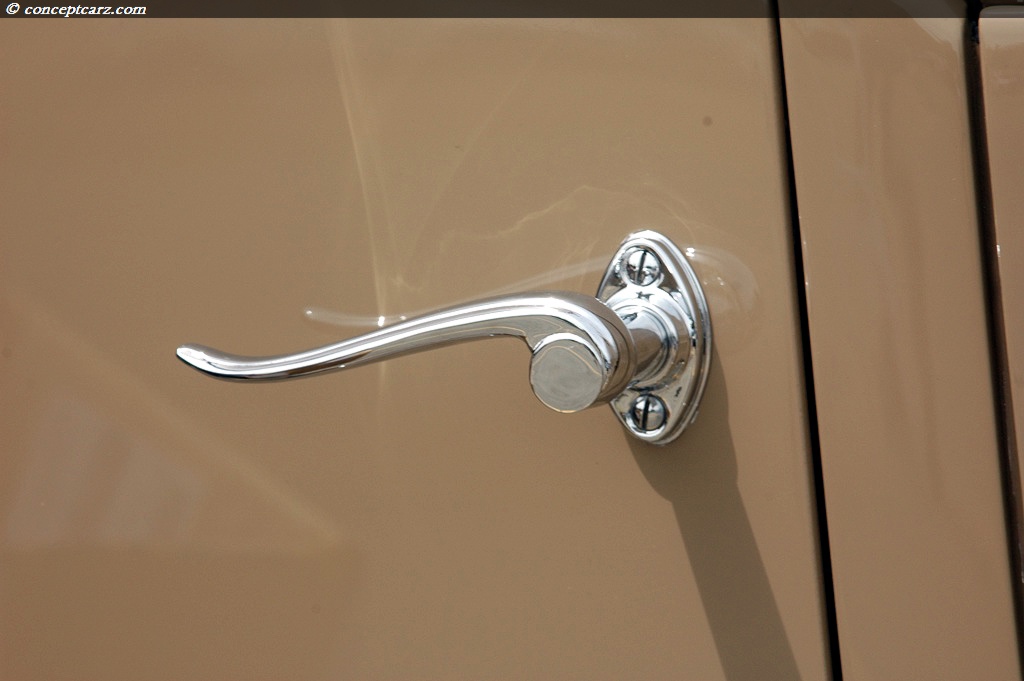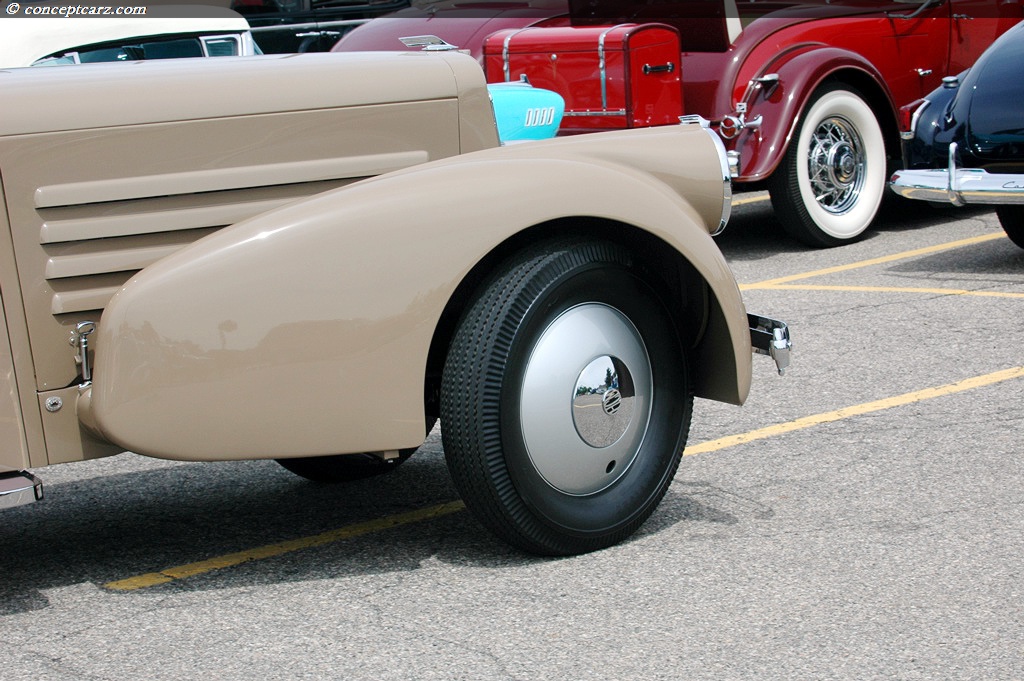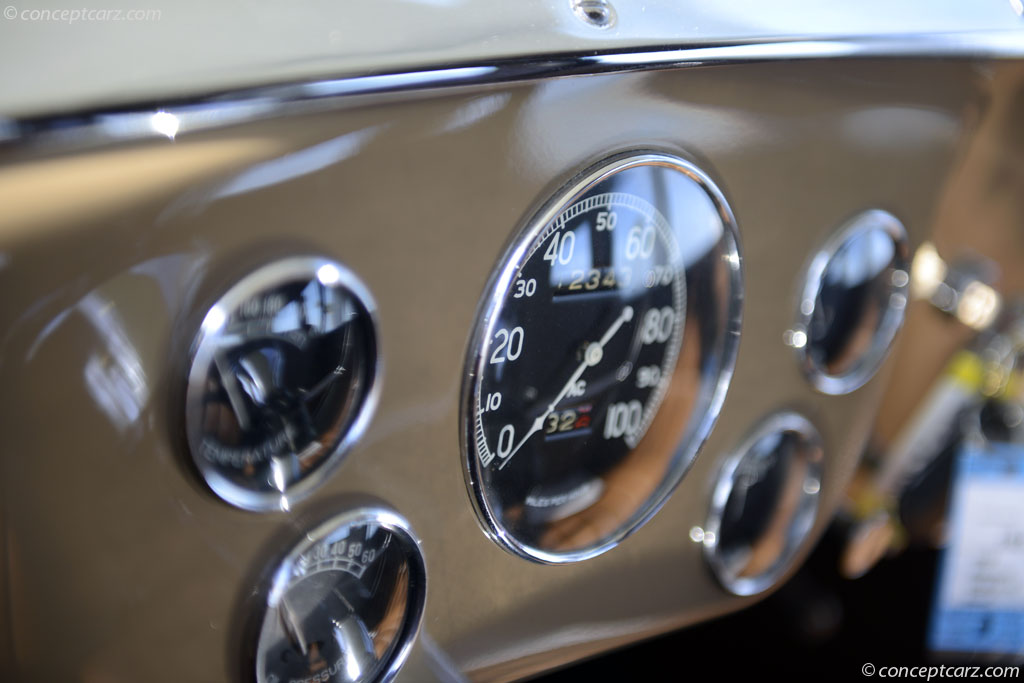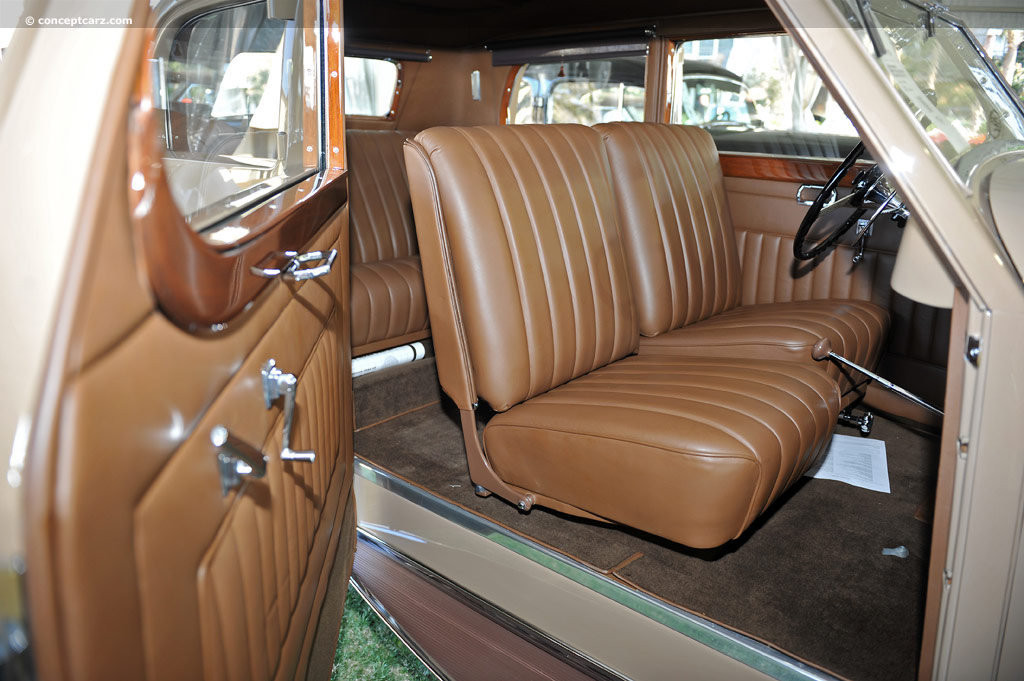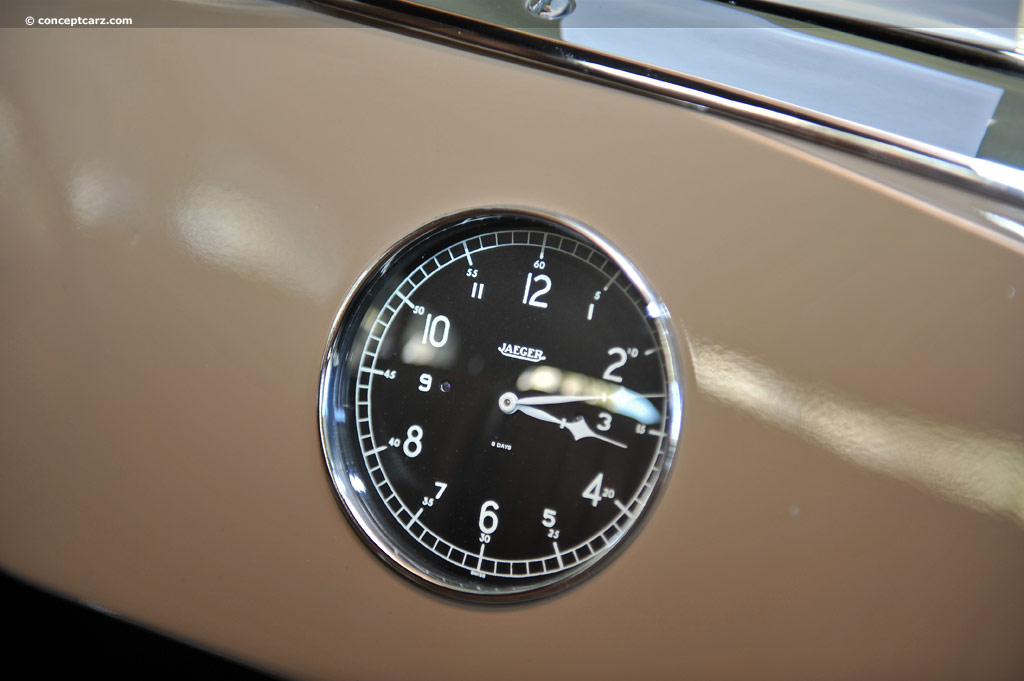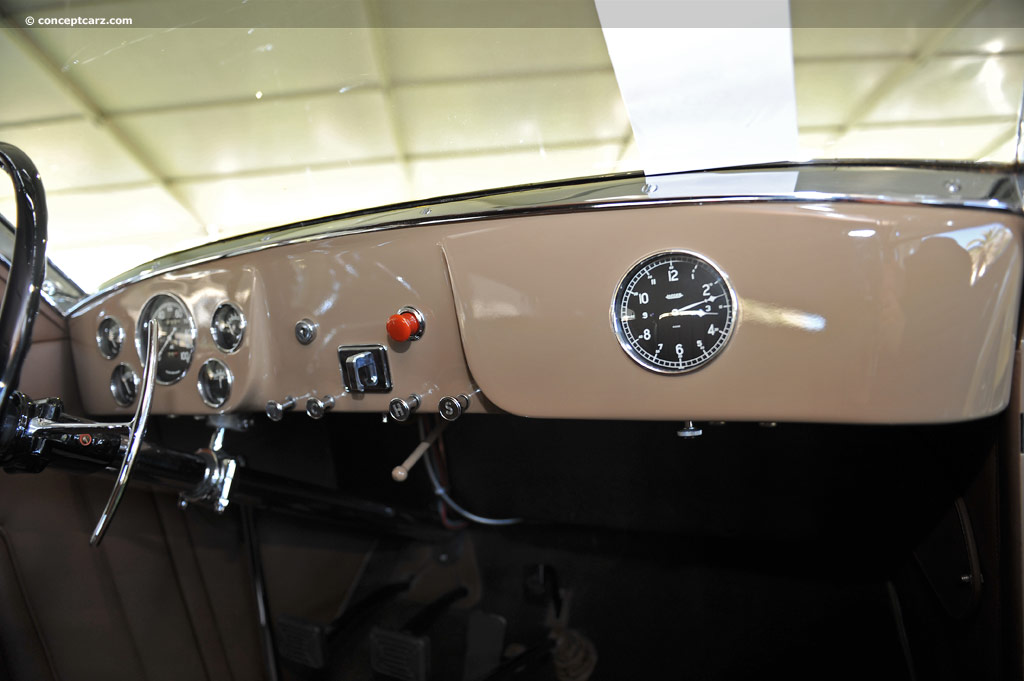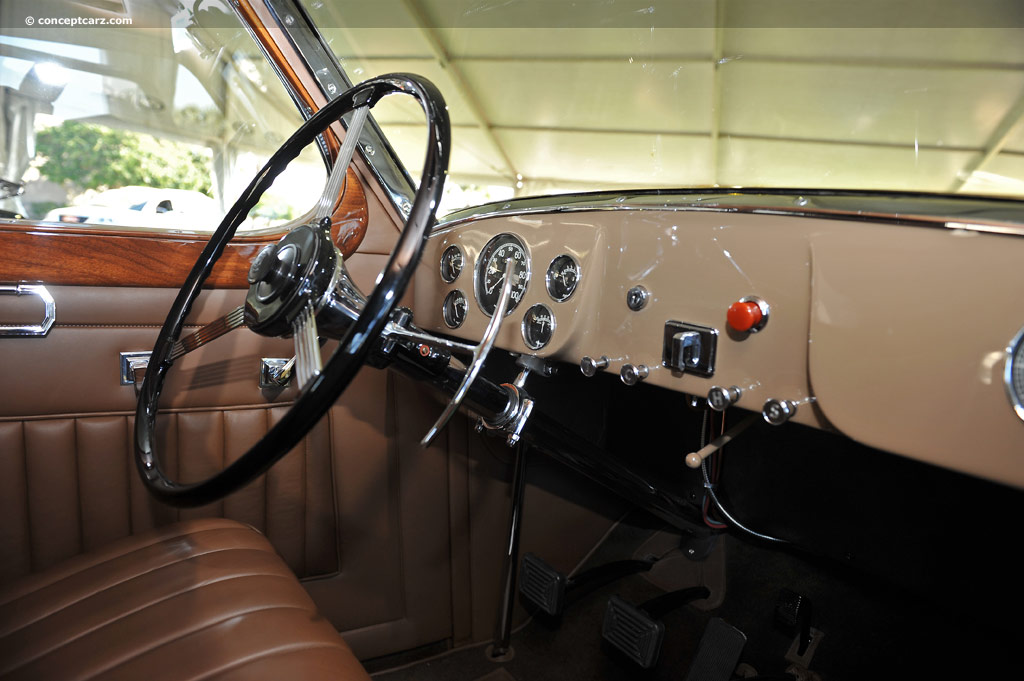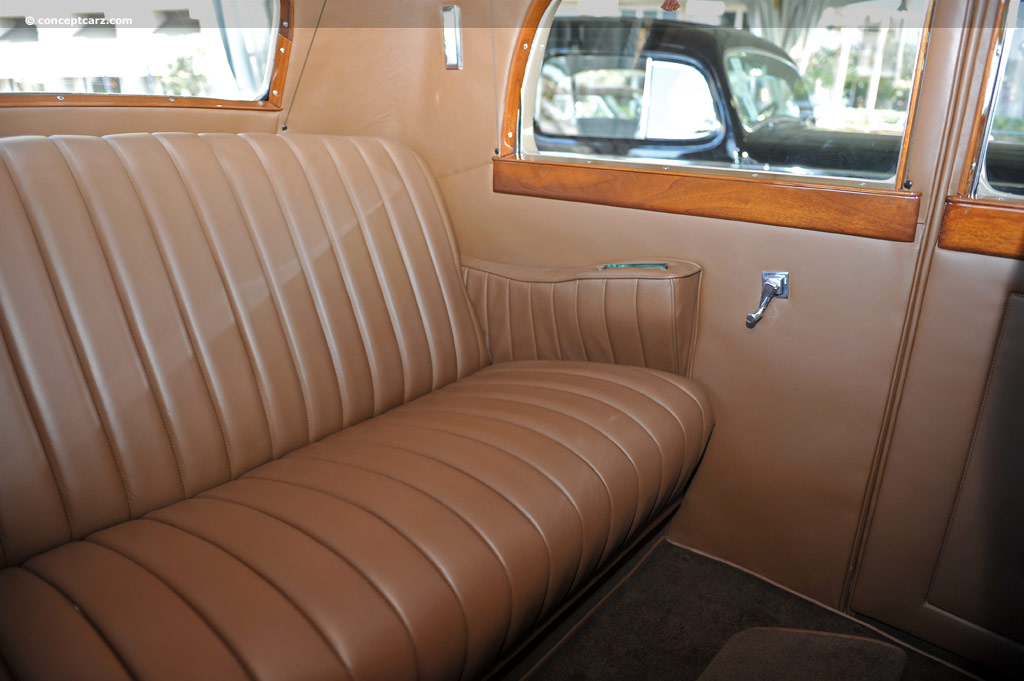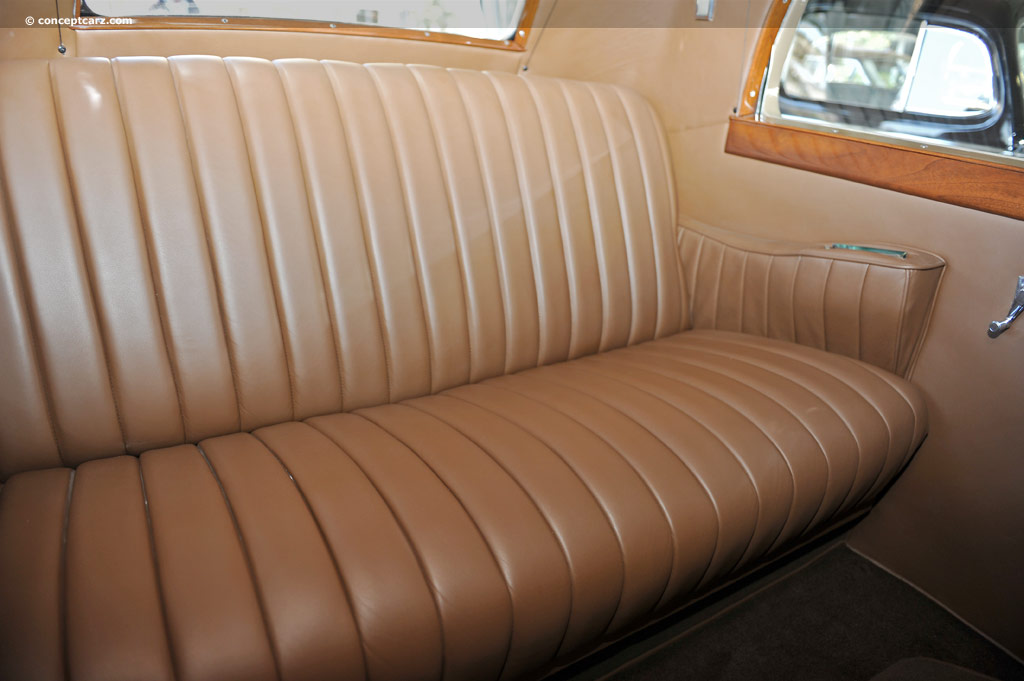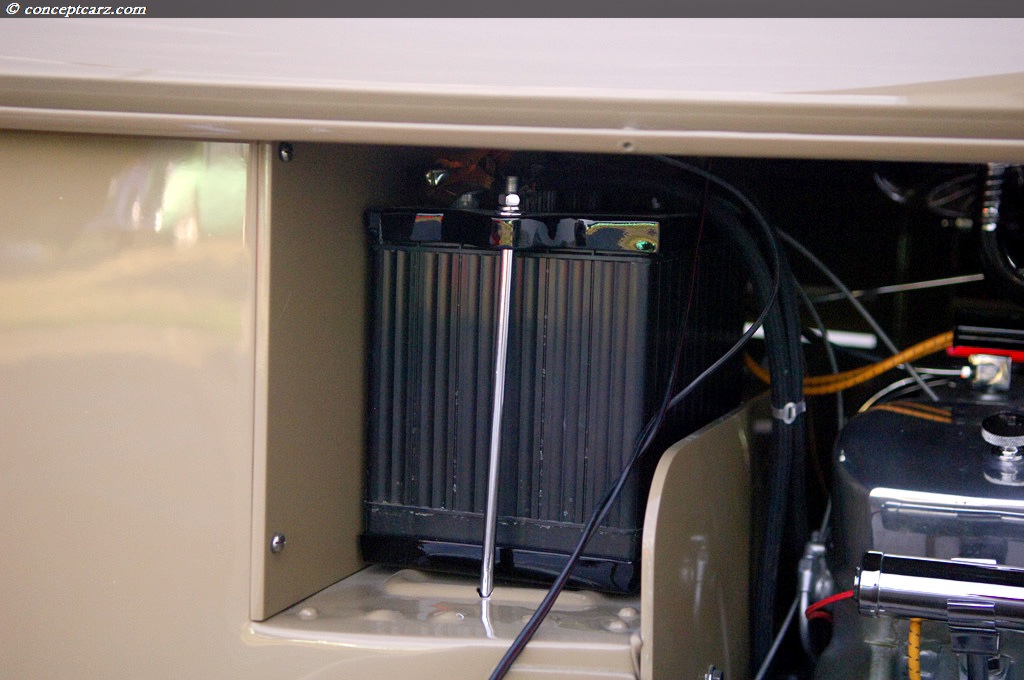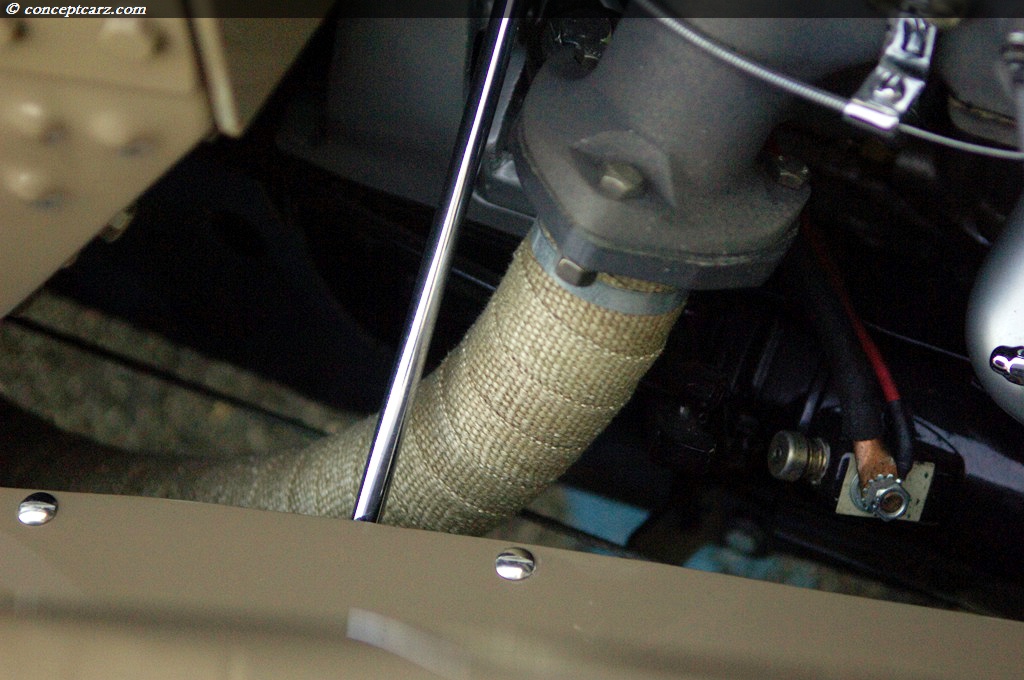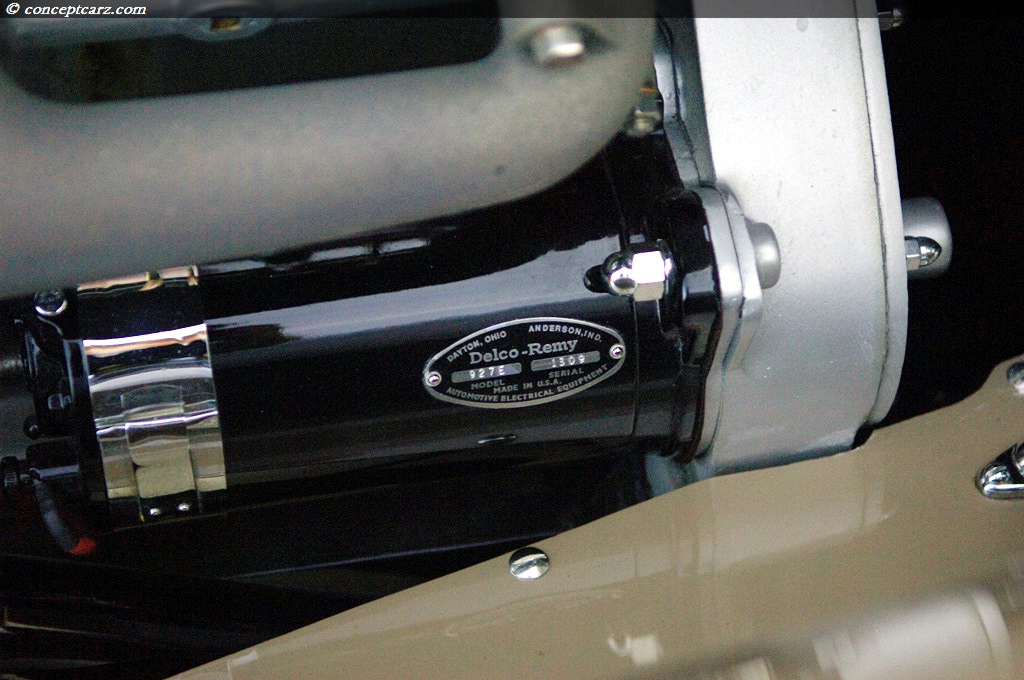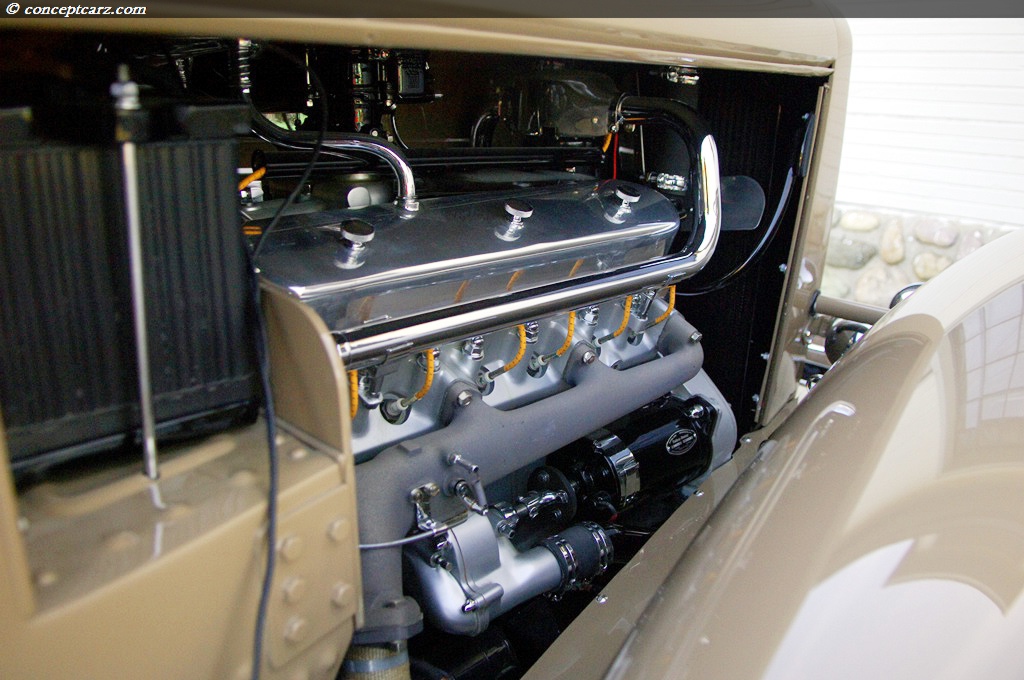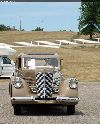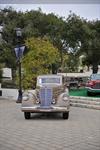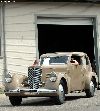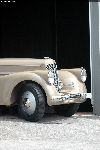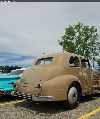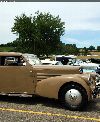Image credit: © conceptcarz.com (Reproduction Or reuse prohibited).
The Marmon V-16 was introduced around the same time Cadillac introduced their V-16-powered automobile. In comparison, the Marmon-built automobile was more powerful and an engineering marvel. By using aluminum, the 491 cubic-inch engine with its overhead valves weighed just over 900 pounds. The engine was formed by merging twin-eight-cylinder engines in a 45-degree angle, giving the engine an impressive look and an astonishing 200 horsepower. The use of steel cylinder sleeves added to the longevity and durability of the engine. The V-16 engine earned Howard Marmon the Society of Automotive Engineers annual design award.
The engine was an engineering marvel and the automobile was a work of art. The problem was the timing; introduced near the onset of the stock market crash and the crippling Great Depression. The most competitive market segment at this time was the upper, high-priced vehicles. Packard, Auburn, and Cadillac, to name a few, produced exquisite automobiles catering to the wealthy. The shortlist of buyers meant production was low, and the profit margin was tight. To stay competitive, the manufacturers needed to continue to introduce new products, designs, and innovative vehicles.
Cadillac and Marmon introduced their V-16 automobiles around the same time. The Great Depression meant there were few who could afford this five-thousand luxury automobile. The competition and the Depression resulted in fewer than four-hundred examples would ever be produced.
Howard Carpenter Marmon's father had worked as an Indianapolis-based manufacturer of milling machinery. When Howard was old enough, he earned his degree in engineering from the University of California and later joined the family firm, eventually becoming vice president and chief engineer within three years. By 1902 he had designed his own vehicle and made it into a reality. It featured full pressure lubrication, air-colled power train with no universal joints, and had the running gear mounted on a separate subframe. In 1904 he had constructed six cars with most given unique features, such as aluminum castings in their bodies. Within five years, he was in full production of water-cooled cars, which he dubbed the Model 32, and would continue to produce this model for seven years. One of the Model 32's, called the 'Wasp', was entered in the inaugural Indianapolis 500 race in 1911. The car traveled the entire 500 miles in fine fashion; in modern times, the race takes about 3 or 4 hours, but back in 1911, it took all day and tested all elements of the car, driver, and team. At the end of the 500-mile race, it was the 'Wasp' that crossed the finish line first and outpaced the entire field.
During the 1920s, the Marmon vehicles became more conventional, though keeping to their high standards of design and construction. The problem with the Marmon's during this era was that they were bland and blended in with most other vehicles on the road; there was little to distinguish them from many of the other cars. Since Marmon catered towards the elite in society, offering the highest degree of luxury, this was a problem, and sales reflected by being mediocre.
Howard Marmon began work on his V16 masterpiece in 1926. The engine would have a displacement size of 491 cubic inches and use overhead v valves operated by pushrods. The block was made from aluminum and used wet cylinder liners. The total horsepower output from this monster was an impressive 200, which was more than adequate to carry the large and stately bodies that were to be mounted on the 145-inch wheelbase.
When Cadillac introduced their V16 engine, and with the onset of The Great Depression, Marmon felt he needed a new plan of attack in order to survive. After meeting with his former vice president and general manager, Fred Moscovics, who had moved on to Stutz, Howard created a sketch of a new vehicle. This new design would have a tubular backbone chassis similar to a Tatra, with its body and suspension mounted to the chassis. The suspension was to be independent on all four wheels, using transverse leaf springs in the front and in the rear. The setup allowed for the body to mounted low to the ground with very low unsprung weight. After some initial testing, it was decided to change the front springs to coils due to the ride being a little too uncomfortable.
The three-speed manual gearbox was mounted rigidly to the tubular backbone. Behind the transmission was an epicyclic overdrive, and was bolted rigidly to the differential housing. This setup was later abandoned due to difficulties with the lubrication system and the shifting linkage. In its place was a standard Marmon Sixteen transmission placed directly behind the engine.
He selected a V12 engine to power the car. The V12 offered more power than the eight-cylinder engine and better economy over the V16. The V12 was created by taking four cylinders from the center of the V16. The rear section was moved forward and welded to the front. The broke and stroke of the V16 were retained, and there was a 45-degree angle between the banks. Traditionally, 45-degree angles do not bowed well for twelve-cylinder engines in Vee configuration, but in this situation, it did.
The engine was capable of producing 150 horsepower at 3700 RPM. Testing was done at the Indianapolis Motor Speedway in July 1932, where the car was able to accelerate from 10 to 50 mph in an impressive 12.77 seconds. Top speed was achieved by race car driver Wilbur Shaw at 113 mph.
Howard Marmon used his initials, HCM, for the name of the car.
The design of the Marmon Sixteen was by a college student. The work had been contracted out to Walter Dorwin Teague Associates in New York. Oddly enough, Mr. Teague did not enjoy automobiles so he assigned the project to his son, Walter Dorwin Teague, Jr., who was a car enthusiast and a student at M.I.T. The design was elegant and it brought about the slogan 'The World's Most Advanced Motor Car.'
After Dorwin's initial experience with successfully designing an automobile, he began creating what he called, 'what a car really should look like.' He created a 1/10-scale model that had influences from a Stutz Blackhawk and from French cars such as the Renault. The model was in the Teague design office when Howard Marmon visited the firm to discuss the new project. When he saw the design, he was impressed. He sent a set of chassis drawings to Teague to get the project underway. Many of Dorwin Teague's initial designs were retained but there were several improvements along the way. The cabin was moved slightly forward and the trunk was reworked, to some degree. The design retained the four-passenger coupe layout. New drawings of the car by Teague featured headlamps set into the fenders which was in the style of Pierce-Arrow. This, and the addition of the hood ornament, was not to Howard Marmon's liking.
The total production costs of the car were taken care of by Howard Marmon himself. It is estimated that those expenses were in the neighborhood of $160,000. The project was completed in 1933, the same time the Company had entered receivership. The car was taken on a national tour in an attempt to stimulate interest in its production by any major automobile manufacturer. No one seemed interested.
The car passed through ownership throughout the years, coming into the care of its last owner in 1999. A restoration was commissioned on the car, bringing it back to its original condition. Dorwin Teague, the designer of the car, gave input during the restoration. Teague had never seen the car, but an opportunity presented itself when the restoration was completed and the car was shown at the 2001 Pebble Beach Concours d'Elegance. At the concours, it was given a perfect score and was awarded Best in Class.
This rare prototype car is a very historically significant automobile and demonstrates the direction the Marmon Company may have gone, had they stayed in business. It is a modest car with several unique design features. It is elegant, refined, and an engineering masterpiece.
This car was offered for sale at the 2007 RM Auctions held at Meadow Brook. This was only the second time in the car's history that it was offered for sale. During its history, it has passed through several ownerships, but during those times, it was a gift or a trade. The 368 cubic-inch overhead valve engine is constructed from aluminum and capable of producing 151 horsepower. There is a three-speed manual gearbox and four-wheel mechanical drum brakes. The wheelbase measures 134 inches with its body suspended in place by an independent suspension. The car was the highlight of the show and was estimated to bring in the highest dollar figure of the day, which it did. The estimates had been set at between $1,000,000 - $1,250,000. It is a car that has a very recent restoration with no flaws or shortcomings. Its history is complete and known, and it can rival for Best in Show at nearly any concours where it is entered.
At the auction, there was interest in the car but not to the degree as anticipated. Since it has not been sold in 75 years, trying to figure out its value is difficult. Bidding slowed around the $800,000 mark. It took a little persuasion, possibly coaching, by Rob Myers for the final bid to be placed. The high bid, after the buyer's premium, was $891,000.By Daniel Vaughan | Jun 2008
The engine was an engineering marvel and the automobile was a work of art. The problem was the timing; introduced near the onset of the stock market crash and the crippling Great Depression. The most competitive market segment at this time was the upper, high-priced vehicles. Packard, Auburn, and Cadillac, to name a few, produced exquisite automobiles catering to the wealthy. The shortlist of buyers meant production was low, and the profit margin was tight. To stay competitive, the manufacturers needed to continue to introduce new products, designs, and innovative vehicles.
Cadillac and Marmon introduced their V-16 automobiles around the same time. The Great Depression meant there were few who could afford this five-thousand luxury automobile. The competition and the Depression resulted in fewer than four-hundred examples would ever be produced.
Howard Carpenter Marmon's father had worked as an Indianapolis-based manufacturer of milling machinery. When Howard was old enough, he earned his degree in engineering from the University of California and later joined the family firm, eventually becoming vice president and chief engineer within three years. By 1902 he had designed his own vehicle and made it into a reality. It featured full pressure lubrication, air-colled power train with no universal joints, and had the running gear mounted on a separate subframe. In 1904 he had constructed six cars with most given unique features, such as aluminum castings in their bodies. Within five years, he was in full production of water-cooled cars, which he dubbed the Model 32, and would continue to produce this model for seven years. One of the Model 32's, called the 'Wasp', was entered in the inaugural Indianapolis 500 race in 1911. The car traveled the entire 500 miles in fine fashion; in modern times, the race takes about 3 or 4 hours, but back in 1911, it took all day and tested all elements of the car, driver, and team. At the end of the 500-mile race, it was the 'Wasp' that crossed the finish line first and outpaced the entire field.
During the 1920s, the Marmon vehicles became more conventional, though keeping to their high standards of design and construction. The problem with the Marmon's during this era was that they were bland and blended in with most other vehicles on the road; there was little to distinguish them from many of the other cars. Since Marmon catered towards the elite in society, offering the highest degree of luxury, this was a problem, and sales reflected by being mediocre.
Howard Marmon began work on his V16 masterpiece in 1926. The engine would have a displacement size of 491 cubic inches and use overhead v valves operated by pushrods. The block was made from aluminum and used wet cylinder liners. The total horsepower output from this monster was an impressive 200, which was more than adequate to carry the large and stately bodies that were to be mounted on the 145-inch wheelbase.
When Cadillac introduced their V16 engine, and with the onset of The Great Depression, Marmon felt he needed a new plan of attack in order to survive. After meeting with his former vice president and general manager, Fred Moscovics, who had moved on to Stutz, Howard created a sketch of a new vehicle. This new design would have a tubular backbone chassis similar to a Tatra, with its body and suspension mounted to the chassis. The suspension was to be independent on all four wheels, using transverse leaf springs in the front and in the rear. The setup allowed for the body to mounted low to the ground with very low unsprung weight. After some initial testing, it was decided to change the front springs to coils due to the ride being a little too uncomfortable.
The three-speed manual gearbox was mounted rigidly to the tubular backbone. Behind the transmission was an epicyclic overdrive, and was bolted rigidly to the differential housing. This setup was later abandoned due to difficulties with the lubrication system and the shifting linkage. In its place was a standard Marmon Sixteen transmission placed directly behind the engine.
He selected a V12 engine to power the car. The V12 offered more power than the eight-cylinder engine and better economy over the V16. The V12 was created by taking four cylinders from the center of the V16. The rear section was moved forward and welded to the front. The broke and stroke of the V16 were retained, and there was a 45-degree angle between the banks. Traditionally, 45-degree angles do not bowed well for twelve-cylinder engines in Vee configuration, but in this situation, it did.
The engine was capable of producing 150 horsepower at 3700 RPM. Testing was done at the Indianapolis Motor Speedway in July 1932, where the car was able to accelerate from 10 to 50 mph in an impressive 12.77 seconds. Top speed was achieved by race car driver Wilbur Shaw at 113 mph.
Howard Marmon used his initials, HCM, for the name of the car.
The design of the Marmon Sixteen was by a college student. The work had been contracted out to Walter Dorwin Teague Associates in New York. Oddly enough, Mr. Teague did not enjoy automobiles so he assigned the project to his son, Walter Dorwin Teague, Jr., who was a car enthusiast and a student at M.I.T. The design was elegant and it brought about the slogan 'The World's Most Advanced Motor Car.'
After Dorwin's initial experience with successfully designing an automobile, he began creating what he called, 'what a car really should look like.' He created a 1/10-scale model that had influences from a Stutz Blackhawk and from French cars such as the Renault. The model was in the Teague design office when Howard Marmon visited the firm to discuss the new project. When he saw the design, he was impressed. He sent a set of chassis drawings to Teague to get the project underway. Many of Dorwin Teague's initial designs were retained but there were several improvements along the way. The cabin was moved slightly forward and the trunk was reworked, to some degree. The design retained the four-passenger coupe layout. New drawings of the car by Teague featured headlamps set into the fenders which was in the style of Pierce-Arrow. This, and the addition of the hood ornament, was not to Howard Marmon's liking.
The total production costs of the car were taken care of by Howard Marmon himself. It is estimated that those expenses were in the neighborhood of $160,000. The project was completed in 1933, the same time the Company had entered receivership. The car was taken on a national tour in an attempt to stimulate interest in its production by any major automobile manufacturer. No one seemed interested.
The car passed through ownership throughout the years, coming into the care of its last owner in 1999. A restoration was commissioned on the car, bringing it back to its original condition. Dorwin Teague, the designer of the car, gave input during the restoration. Teague had never seen the car, but an opportunity presented itself when the restoration was completed and the car was shown at the 2001 Pebble Beach Concours d'Elegance. At the concours, it was given a perfect score and was awarded Best in Class.
This rare prototype car is a very historically significant automobile and demonstrates the direction the Marmon Company may have gone, had they stayed in business. It is a modest car with several unique design features. It is elegant, refined, and an engineering masterpiece.
This car was offered for sale at the 2007 RM Auctions held at Meadow Brook. This was only the second time in the car's history that it was offered for sale. During its history, it has passed through several ownerships, but during those times, it was a gift or a trade. The 368 cubic-inch overhead valve engine is constructed from aluminum and capable of producing 151 horsepower. There is a three-speed manual gearbox and four-wheel mechanical drum brakes. The wheelbase measures 134 inches with its body suspended in place by an independent suspension. The car was the highlight of the show and was estimated to bring in the highest dollar figure of the day, which it did. The estimates had been set at between $1,000,000 - $1,250,000. It is a car that has a very recent restoration with no flaws or shortcomings. Its history is complete and known, and it can rival for Best in Show at nearly any concours where it is entered.
At the auction, there was interest in the car but not to the degree as anticipated. Since it has not been sold in 75 years, trying to figure out its value is difficult. Bidding slowed around the $800,000 mark. It took a little persuasion, possibly coaching, by Rob Myers for the final bid to be placed. The high bid, after the buyer's premium, was $891,000.By Daniel Vaughan | Jun 2008
2015 RM Sotheby's : Amelia Island
Pre-Auction Estimates :
USD $450,000-USD $550,000
Sale Price :
USD $429,000
2013 RM Auctions - Amelia Island
Pre-Auction Estimates :
USD $400,000-USD $600,000
Sale Price :
USD $407,000
2011 RM Auctions at Monterey
Pre-Auction Estimates :
USD $800,000-USD $1,000,000
High Bid (Lot was not sold)
USD $475,000
2007 Vintage Motor Car Auction at Meadow Brook Hall
Pre-Auction Estimates :
USD $1,000,000-USD $1,250,000
Sale Price :
USD $891,000
1932 Marmon HCM V12 Auction Sales
Recent Sales of the Marmon HCM V12
(Data based on Model Year 1932 sales)
| 1932 Marmon HCM V-12 Prototype Chassis#: DD609 Sold for USD$429,000 2015 RM Sotheby's : Amelia Island |   |
| 1932 Marmon HCM V-12 Two-Door Sedan Prototype Chassis#: DD609 Sold for USD$407,000 2013 RM Auctions - Amelia Island |   |
| 1932 Marmon HCM V12 Sold for USD$891,000 2007 Vintage Motor Car Auction at Meadow Brook Hall |   |
Marmon HCM V12s That Failed To Sell At Auction
1932 Marmon HCM V12's that have appeared at auction but did not sell.
| Vehicle | Chassis | Event | High Bid | Est. Low | Est. High |
|---|---|---|---|---|---|
| 1932 Marmon HCM V-12 2 Door Sedan Prototype | DD609 | 2011 RM Auctions at Monterey | $475,000 | $800,000 | $1,000,000 |
Vehicles With Comparable Market Values
Similar sales to the $575,667 range.
| 1971 Ferrari 365 GTB/4 Daytona Berlinetta by Scaglietti Chassis#:14071 Sold for $579,405 2024 RM Sothebys : Paris | |
| 1971 PLYMOUTH HEMI CUDA Chassis#:BS23R1B347550 Sold for $577,500 2024 Barrett-Jackson : Scottsdale AZ | |
| 1935 BREWSTER COUPE ROADSTER Chassis#:181117853 Sold for $577,000 2023 Gooding & Company : Estate of Mark Smith Auction |   |
| 1962 Chrysler Ghia L6.4 Chassis#:0305 Sold for $577,000 2023 Bonhams : Scottsdale Auction |   |
| 1953 KINDIG CF1 BARRETT-JACKSON EDITION CUSTOM ROADSTER Chassis#:UTR07088 Sold for $572,000 2023 Barrett-Jackson : Scottsdale, Az. | |
| 1962 CHEVROLET CORVETTE 327/300 CONVERTIBLE Chassis#:20867S107385 Sold for $572,000 2023 Barrett-Jackson : Scottsdale, Az. | |
| 2006 FORD GT Chassis#:1FAFP90S36Y400663 Sold for $577,500 2023 Barrett-Jackson : Scottsdale, Az. |   |
| 2018 PORSCHE 911 GT2 RS Chassis#:WP0AE2A92JS186077 Sold for $577,500 2023 Barrett-Jackson : Scottsdale, Az. | |
| 1936 Bugatti Type 57 Binder Coupe Sold for $577,500 2023 Mecum : Kissimmee | |
| 2021 McLaren 765LT Sold for $572,000 2023 Mecum : Kissimmee | |
| 1970 Pontiac GTO Judge Ram Air IV Convertible Sold for $572,000 2023 Mecum : Kissimmee | |
| 1966 FERRARI 330 GT 2+2 SERIES II Chassis#:08325 Sold for $577,000 2022 Gooding & Company : Pebble Beach |   |
| 1967 Porsche 911 'Rally' Coupe Chassis#:308299 Sold for $570,000 2022 RM Sothebys : Monterey |   |
| 2001 Nissan Skyline R34 GT-R V-Spec II Chassis#:BNR34401250 Sold for $577,500 2022 Mecum : Monterey | |
| 1967 Ferrari 330 GTC Chassis#:9955 Sold for $577,500 2022 Mecum : Monterey |   |
| 1939 Bugatti Type 57C Stelvio by Gangloff Chassis#:57769 Sold for $577,000 2022 RM Sothebys : Monterey |   |
| 1965 FERRARI TESTA ROSSA RECREATION Chassis#:6481 Sold for $577,000 2022 Gooding & Company : Amelia Island Auction | |
| 1970 CHEVROLET CHEVELLE LS6 CONVERTIBLE Chassis#:136670B146307 Sold for $572,000 2022 Barrett-Jackson : Scottsdale, Arizona | |
| 1987 Lamborghini Countach Sold for $572,000 2022 Mecum : Kissimmee | |
| 1961 Porsche 356 Carrera Zagato Coupé Sanction Lost Chassis#:117289 Sold for $576,239 2021 RM Sothebys : London |
1932 Marmon HCM V12
• Additional valuation insight and sales data• History
• Specifications
• Image gallery
